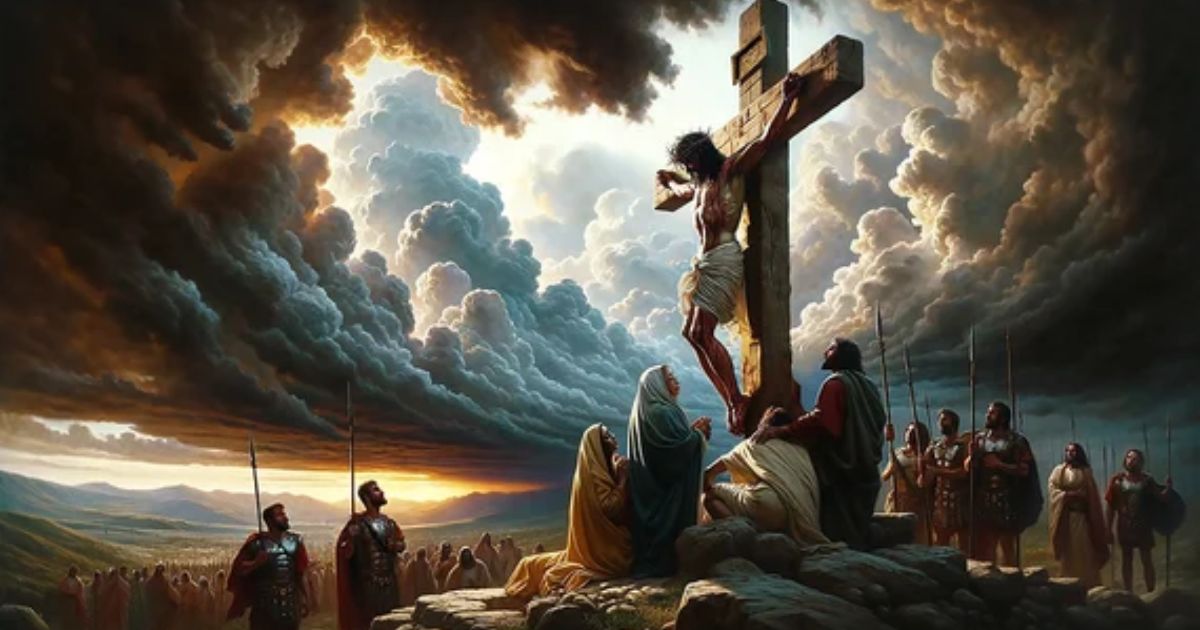Introduction:
The crucifixion of Jesus Christ stands as the most transformative event in Christian theology, a moment where divine purpose intersected with human history. This profound narrative goes far beyond a simple historical account—it represents the ultimate demonstration of God’s love and humanity’s redemption.
When we ask “Why Was Jesus Crucified?”, we’re peeling back layers of complex spiritual, political, and theological motivations that converged in one of the most significant moments in human experience. The crucifixion wasn’t just an execution; it was a meticulously orchestrated divine plan that would reshape mankind’s relationship with the divine.
Earthly Reason:
The historical context of Jesus’ crucifixion reveals a complex interplay of religious, political, and personal tensions. The Jewish leaders of the time were driven by a potent mix of deeply rooted emotions and calculated political strategies. Their opposition to Jesus Christ stemmed from multiple sources: profound theological disagreement, political threat, and personal animosity.
Pontius Pilate, representing the Roman Empire, found himself navigating a treacherous political landscape. The execution of Jesus was not merely a religious dispute but a calculated political maneuver. By allowing the crucifixion, Pilate sought to maintain peace, appease local religious authorities, and demonstrate the absolute power of Caesar’s administration.
The method of execution was purposefully chosen. Crucifixion was not just a means of death but a powerful Roman deterrent—a public spectacle designed to crush rebellion and instill fear in subjugated populations. The Roman Empire used this brutal form of execution to maintain control and suppress potential uprisings.
Heavenly Reason: Divine Strategy of Salvation
Beyond the human drama, the crucifixion represented God’s profound redemptive plan. What appeared to be a moment of supreme tragedy was actually the most strategic act of love in human history. The biblical text reveals a deeper narrative of salvation that transcends human understanding.
Isaiah 53:10 powerfully captures this divine intention:
“It was the LORD’s will to crush Him and cause Him to suffer.”
This wasn’t random violence, but a meticulously planned pathway to humanity’s reconciliation with God. Jesus, recognized as the Lamb of God, became the ultimate sacrificial offering for mankind’s sinfulness.
Prophetic Convergence
The crucifixion remarkably aligned with numerous Old Testament prophecies, demonstrating a divine orchestration beyond mere coincidence. Scriptural references like Zechariah 12:10, Psalm 22, and Galatians 3:13 provided intricate details about the Messiah’s manner of death centuries before the event.
Theological Significance: Beyond Historical Narrative
The crucifixion accomplished profound divine objectives through atonement for sin, providing a pathway for redemption, demonstrating God’s incomprehensible love, and offering intercession for transgressors.
This wasn’t simply an execution but a profound spiritual transaction that addressed the fundamental brokenness of human nature. Through this act, Jesus Christ bridged the insurmountable gap between divine holiness and human frailty.
Why This Matters: Personal and Spiritual Transformation
Understanding the crucifixion invites personal reflection on faith, forgiveness, and the sovereignty of God. It reveals the depths of human brokenness while simultaneously showcasing the extraordinary extent of divine love.
The event challenges individuals to contemplate their own spiritual journey, understanding how this singular moment of sacrifice offers hope, redemption, and a transformative path to reconciliation with the divine.
Reflective Insights: A Personal Journey
What does this narrative reveal about divine mercy? How might understanding this historical event transform our perspective on suffering, reconciliation, and spiritual purpose? It invites a deeply personal exploration of faith, challenging individuals to look beyond surface-level understanding and engage with the profound theological implications of Jesus’ sacrificial death.
Conclusion:
The crucifixion represents far more than a historical event—it’s the ultimate demonstration of love, a strategic divine intervention offering hope and a pathway to redemption for all humanity. It stands as a testament to the extraordinary lengths of divine love and the potential for spiritual transformation.

Admin at UrbanSinfinity.com, passionate about sharing inspiring Bible Quotes and spiritual insights to uplift and strengthen faith. Dedicated to spreading wisdom from Scripture for daily encouragement and growth.
